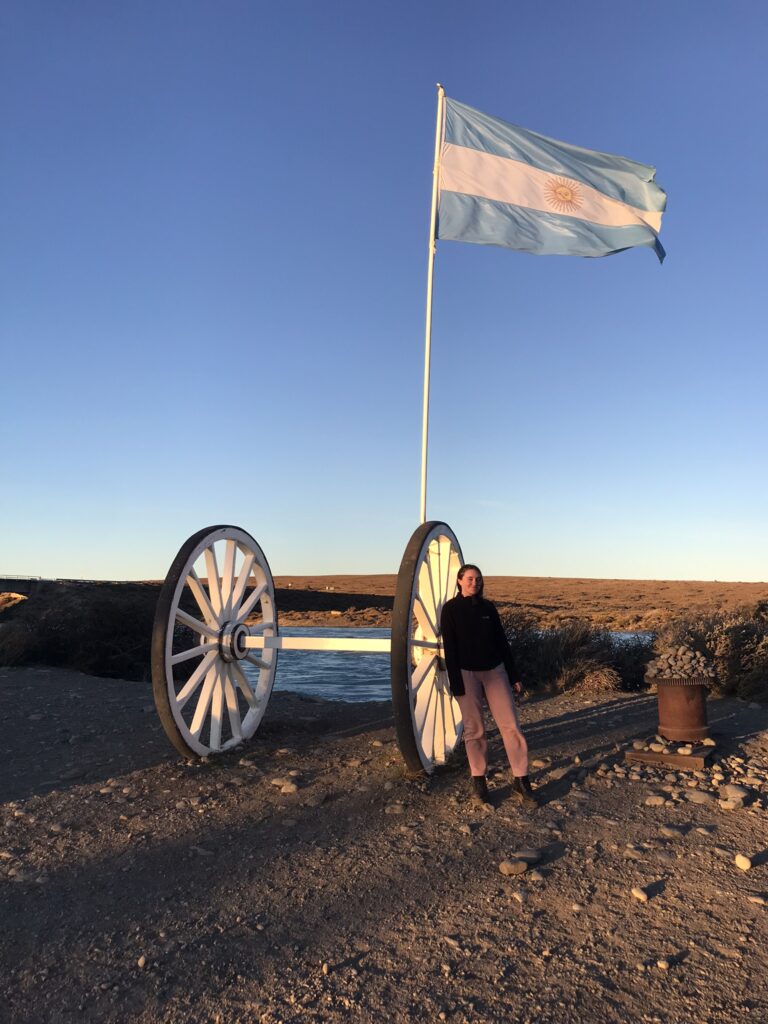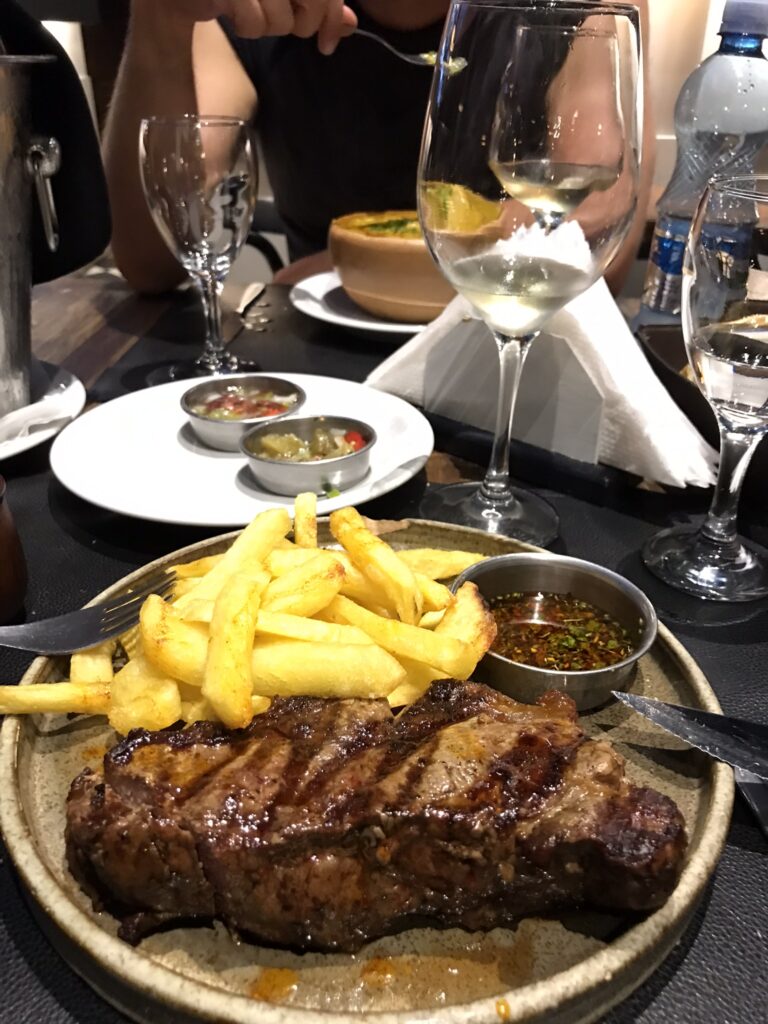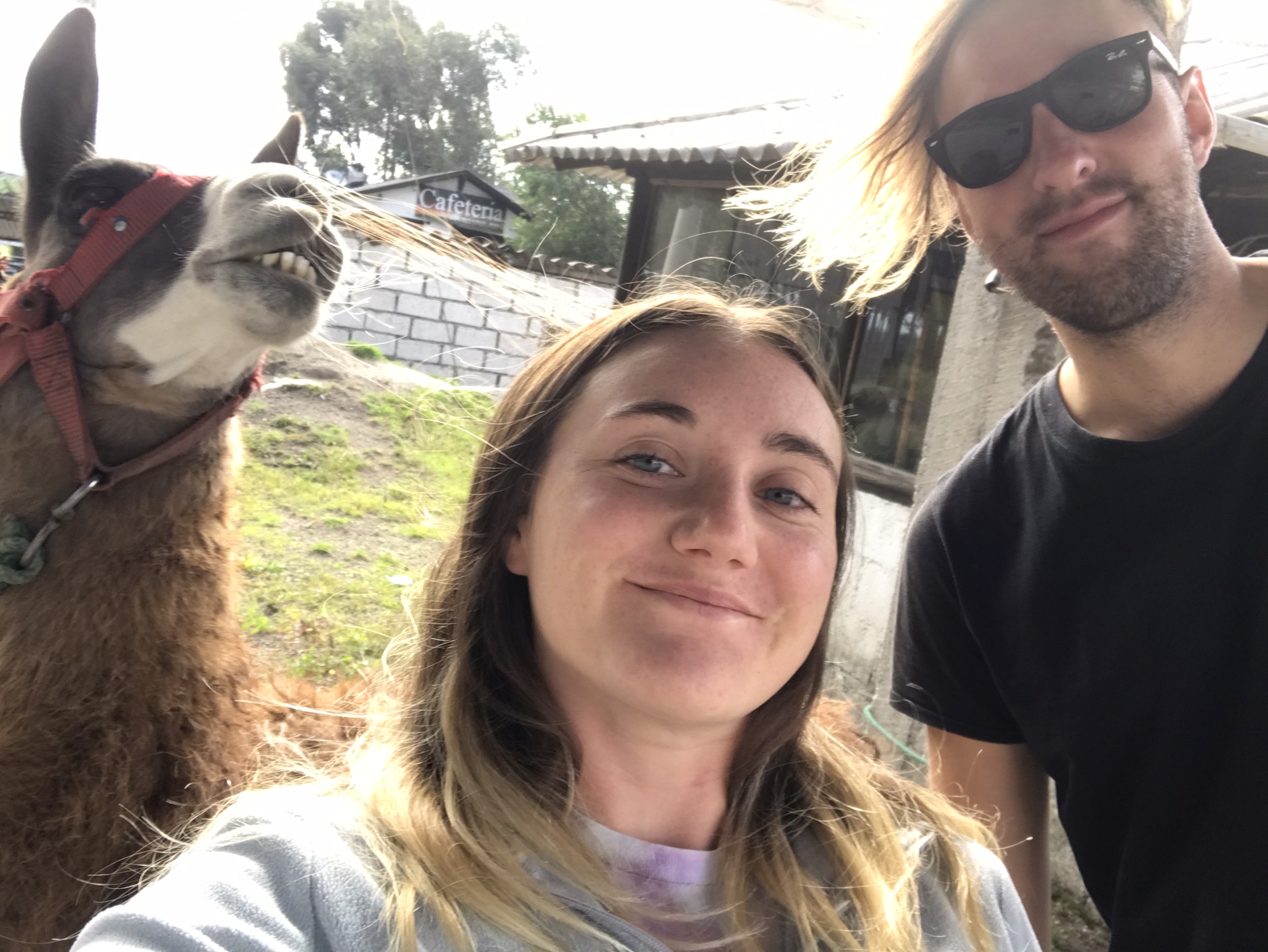
When on the road, we’d often ask travelers ‘Where are you going next?’ or ‘What is your route?’ and sometimes they’d reply ‘Argentina’. At this point I would dive into a conversation about the blue dollar. We were given a heads up about this in Quito, Ecuador by a friendly backpacker so we felt it was our responsibility to pass on this VERY IMPORTANT money-saving info. First things first, a short introduction about the money situation in Argentina.
Argentina’s economy is not stable; inflation is sky-high with prices in restaurants, shops and hotels constantly changing as the value of the currency declines. When handed a menu in a restaurant you may notice the numerous price stickers over the original price, this is because prices change on a daily basis and restaurants can’t reprint their menus every day or week in line with price increases.
As tourists, we have a way to play the system, it’s called the blue dollar.
There is an official exchange rate for US dollars and an unofficial exchange rate, which is almost double the official exchange rate. This basically means that you can almost double your money by first exchanging it from US dollars. These dual exchange rates exist as there is a huge demand by Argentinians for US dollars, Argentinians prefer to put their savings into dollars as dollars are a reliable and stable currency (unlike their own). You can only get this favorable exchange rate by changing US dollars into Argentinian peso within the country. There are various ways to change money for the blue rate (unofficial black-market rate). One of these is changing money on the street. If you are carrying US dollars, you can either keep an eye out for people on the street shouting ‘cambio’ or just walk into any restaurant, hotel or other business and ask if they want to change money – some will, others won’t, it’s pot luck. You will find that the street exchange rate is much better in cities such as Buenos Aires and much lower in remote towns in Patagonia.
I highly advise against taking cash out at an ATM, if you do you’ll most likely be charged the official exchange rate, which means less cash for the same cost in your own currency. Avoid this like the plague! You can use card payments for purchases and some (not all!) banks issue refunds, however these refunds may take anything from 3 days to 1 month to come back to your account so you won’t know if it’s successful until you actually get the refund, which may take a while.
The other option, which we favored, was taking cash out at a Western Union. If you don’t feel comfortable changing money in the street or if you don’t have any dollars in cash, then this is the option for you. Simply head to the Western Union website and send yourself money (ensure that you use your own country’s western union website as we had problems as we signed up on the US Western Union website).Go to the nearest Western Union and show them your tracking number alongside ID and collect the cash. There are Western Union branches throughout Argentina in most major towns and cities, however be prepared that sometimes the Western Union branches may be unexpectedly closed, or a branch might be running low on cash and so unable to provide your money (this happened to us on multiple occasions). Also be prepared to queue at the Western Union branches. To avoid problems you ideally you want to send yourself enough money to keep you going for a couple of days. Don’t be a dick and send yourself £1000, not only will it rinse all the cash reserves from the Western Union branch meaning that others behind you in the queue might not be able to get their cash, but the cashier also might not be able to give you any money at all if they don’t have the cash reserves. The cashier cannot split the Western Union transfer into two payments, they have to have the complete amount in order to give you the cash so it’s much better to go for a medium amount. You also don’t want to send yourself too little and end up stuck somewhere without cash, it’s tricky to get this balance right. Another tip for sending money is to make sure that you round up to the nearest 100 peso as it makes it easier for the cashier and means you don’t either lose a small amount of money or end up with useless change.
The most important advice I can give: know the official and unofficial exchange rate!
If Western Union is your main source of cash, watch out for public holidays when the branch might be closed. You don’t want to be stuck without cash for 4 days, I speak from experience as this happened to us in Salta around Carnival time. Also watch out as the day either side of the holiday will be chaotic with people frantically trying to withdraw and the Western Union may be rinsed of cash.
It’s advantageous to pay for accommodation in cash using the blue dollar. But you must make sure that the hotel/hostel you book uses the official (lower) exchange rate. We almost got caught out by this in Buenos Aires. I think some hostels have cottoned on to this money hack and now ask for payment either in US dollars or in peso at the blue rate (higher rate), which means it will essentially cost you more money if you pay in peso.
This applies in other places too, especially touristy spots. Always work out if it’s cheaper to pay in dollars rather than peso, we found this with a tango and dinner show in Buenos Aires. Sometimes tourists are charged more in peso than it would be to pay in dollars and it can be tricky to calculate at times.

Some credit cards might work at the blue dollar rate – on a few occasions we were stuck without cash and had to make some payments using our Monzo cards, at first we were charged at the official exchange rate but later received a refund of around 40% to take the overall cost back down to the blue rate. Sometimes this refund took over a week to come through. Make a small payment on your card and wait to see if you get a refund. It might take 9 days, so be patient.
If you book a tour, make sure you pay physically in person rather than online if possible, or double check beforehand. If you are paying on card the merchant for the transaction must be in Argentina to get the refund. We paid for a tour with getyourguide in peso, however as it is an international company this processed through a German back and so weren’t refunded. Obviously, the transaction must be in peso!
Always ask before you get in a long line at the Western Union, they may have run out of cash and the people in the queue may just be locals paying their bills. Don’t waste your time!
Carry a photocopy of your passport, some Western Union branches may ask for it (it’s unlikely tho)
As Western Union branches may have limited cash it’s sometimes worth having 2 transfers, one larger and one smaller, as you might be able to get the smaller cash amount out.
Be prepared for a lot of physical cash. You may get 100,000 pesos in 100 bills, which is quite a lot to carry.
If you go on a day/multi-day trip, buy dollars in Uruguay and exchange them for ARS on the boat.
Bring extra cash reserves (ARS and dollars). Getting cash out at El Calafate is a nightmare. You may have to wait for 2 hours and the Western Union agent is not in the town centre (it’s a bit of a trek uphill). However you can find many places to change (Cambio) dollars into peso, the best places to go are restaurants and hotels. Most places publish their exchange rate on their front door or window. El Calafate is very touristy so don’t expect a very good exchange rate. Ask around for where the locals get their money changed, it’ll be a much better rate
Get rid of all ARS before you leave the country, no one will want to exchange ARS for other currencies.
